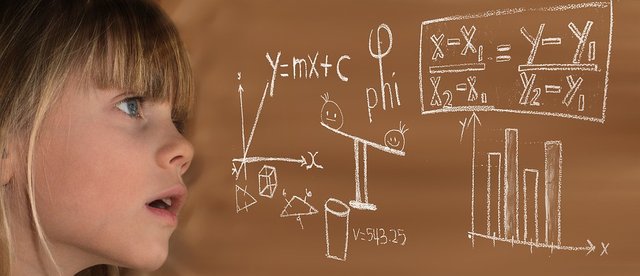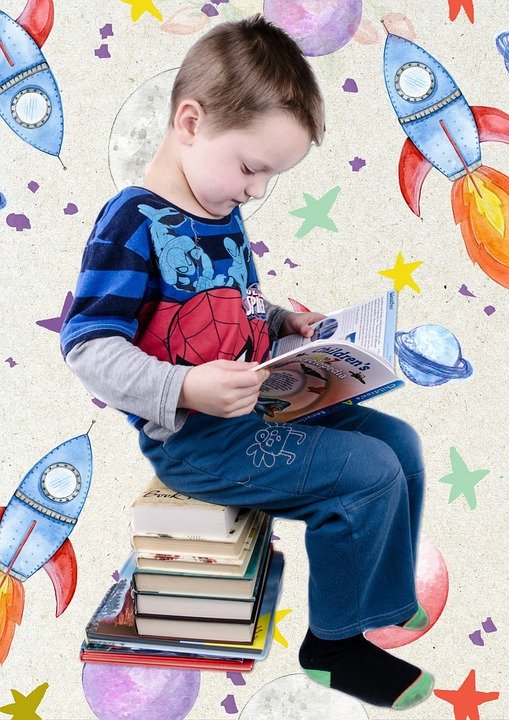STEM Education: A Challenge

Is it true that learning science is difficult and boring? Children tend to say that learning science is difficult and tedious, especially math, physics, chemistry, or biology. This doctrine continues to cling to the minds of children. I know it. I took an example in my class. I asked the children about the lessons that were difficult for them. Average answering science.
Science lessons - though taught at the basic level - are still considered a frightening specter for children. Specifically for developing countries, science lessons have not been able to increase children's interest in science. This paradigm must be changed. Science is an important lesson about life. Therefore, schools must provide a correct understanding of science.
According to PISA (Program for International Student Assessment), an understanding of science, and of science-based technology, is necessary not only for those whose careers depend on it directly, but also for any citizen who wishes to make informed decisions related to the many controversial issues under debate today. From maintaining a healthy diet, to managing waste in big cities, to weighing the costs and benefits of genetically modified crops or mitigating the catastrophic consequences of global warming, science is ubiquitous in our lives.[1]
The importance of understanding science to students will have an impact on their learning activities. I am sure, science learning with the right understanding will make science as a fun lesson. Children will think critically of their environment. Everything they see will be tied to science. Science gives them an assessment of good or bad things. For example, food products. Children who have an understanding of science will certainly see the composition of these products. They will think whether the chemicals contained therein are safe for consumption or not.
According to PISA report, most students who sat the PISA 2015 test expressed a broad interest in science topics and recognized the important role that science plays in their world; but only a minority of students reported that they participate in science activities. Boys and girls, and students from advantaged and disadvantaged backgrounds, often differ in the ways they engaged with science and envisaged themselves working in science-related occupations later on. Parents and teachers can challenge gender stereotypes about science-related activities and occupations to allow girls and boys to achieve their potential. To support every student’s engagement with science, they can also help students become more aware of the range of career opportunities that are made available with training in science and technology.[1]

One approach to science learning worth considering is STEM education. According to my reading, STEM education has several different senses depending on the viewpoint and interests of each. STEM is the acronym for Science, Technology, Engineering, and Mathematics, and encompasses a vast array of subjects that fall into each of those terms. While it is almost impossible to list every discipline, some common STEM areas include: aerospace engineering, astrophysics, astronomy, biochemistry, biomechanics, chemical engineering, chemistry, civil engineering, computer science, mathematical biology, nanotechnology, neurobiology, nuclear physics, physics, and robotics, among many, many others. As evidenced by the multitude of disciplines, it’s clear that STEM fields affect virtually every component of our everyday lives.[2]
STEM is a curriculum based on the idea of educating students in four specific disciplines — science, technology, engineering and mathematics — in an interdisciplinary and applied approach. Rather than teach the four disciplines as separate and discrete subjects, STEM integrates them into a cohesive learning paradigm based on real-world applications.[3] STEM (science, technology, engineering and mathematics, previously METS) is the academic disciplines of science, technology, engineering and mathematics. This term is typically used when addressing education policy and curriculum choices in schools, to improve competitiveness in science and technology development. It has implications for workforce development, national security concerns and immigration policy. Education systems and schools play a central role in determining girls' and boys' interest in STEM subjects and in providing equal opportunities to access and benefit from quality STEM education.[4]
STEM education in schools will have an impact in the career of children in the future. Children need expertise in STEM field. Currently, companies have developed technology systems to market their products. This is one of the challenges of the global era in the world of education, which is able to make students who have expertise in the field of STEM.
According to a report (in website STEEMconnector.org), projections estimate the need for 8.65 million workers in STEM-related jobs. The manufacturing sector faces an alarmingly large shortage of employees with the necessary skills — nearly 600,000. The field of cloud computing alone will have created 1.7 million jobs between 2011 and 2015, according to the report. The U.S. Bureau of Labor Statistics projects that by 2018, the bulk of STEM careers will be[See citation 3]:
| Field | Percentage |
|---|---|
| Computing | 71 percent |
| Traditional Engineering | 16 percent |
| Physical sciences | 7 percent |
| Life sciences | 4 percent |
| Mathematics | 2 percent |
From the above data, the computer field has a higher percentage. This means that every job will use the computer. This is what became the face of industry in the 21st century. Everything connected with computers. So, inevitably, the school is supposed to apply this STEM education in every subject.

Why STEM important?
In the 21st century, scientific and technological innovations have become increasingly important as we face the benefits and challenges of both globalization and a knowledge-based economy. To succeed in this new information-based and highly technological society, students need to develop their capabilities in STEM to levels much beyond what was considered acceptable in the past.[5]
Thus, undoubtedly, STEM education is an appropriate choice for schools in the face of the 21st century. Developed countries have used this STEM education. Now, it is time for developing countries to use STEM education in their learning. STEM in the United States may have been a top priority to support the career of children in the future. But in Indonesia, STEM education is a big challenge for me and the educators here.
Why? The Indonesian government still has not made STEM education a top priority. This is unfortunate, because Indonesia is one of the major countries that consume technology and information. More unfortunate, when in every class the unavailability of computer and WIFI network. This is the main challenge for us.
References
[1] http://www.oecd.org/education/pisa-2015-results-volume-i-9789264266490-en.htm
[2] https://teach.com/what/teachers-know/stem-education/
[3] https://www.livescience.com/43296-what-is-stem-education.html
[4] https://en.wikipedia.org/wiki/Science,_technology,_engineering,_and_mathematics
[5] http://engineeringforkids.com/article/02-02-2016_importanceofstem
[6] https://www.ed.gov/stem
Soe kirem link artikel nyoe bak curie thunderbird???
😡😡😡
Postingan ini tidak ditulis dalam bahasa Indonesia dan tidak menggunakan tag #indonesia. Kenapa pula thunderbird dan curie Indonesia memberikan kurasi? Artikel ini didedikasikan untuk curie education.
Ah...yang pemting om @teukumukhlis...ssip gitu loohh..! Omong2 begini mas, kenapa pelajaran science menjadi momok, karena pengajarannya masih berkiasar kejar target, jadi guru nggak sempat mengajarkan Dan memperhatikan muridnya yang masih belum memahami.
Hehehe... Yang penting curie masuk, walaupun curasinya lebih minim. 😁
Ga penting itu. Ini serius! Bukan candaan!
Seharusnya, curie Indonesia bisa memberikan suaranya kepada yang lebih membutuhkan! Masih banyak postingan Indonesia yang bagus tidak mendapatkan kurasi.
Curie indonesia memberi kurasi kepada post #indonesia. Tapi ini? Bukankah ini pembodohan?
Ini bentuk pelecehan terhadap usaha keras seseorang. Saya sudah melihat jejak kurasi thunderbird. Semua kurasi berbahasa Indonesia atau bilingual.
Saya sudah chat @aiqabrago, tapi tak ada jawaban. Mungkin @levycore bisa menjawab.
Kalo berbicara kebutuhan, lebih baik saya diam saja pak @teukumukhlis.
Very good post and very true thank you.
Very cool post!
Thank you!
Mantap pak. . 👍👍👍
Congratulations! This post has been upvoted from the communal account, @minnowsupport, by teukumukhlis from the Minnow Support Project. It's a witness project run by aggroed, ausbitbank, teamsteem, theprophet0, someguy123, neoxian, followbtcnews/crimsonclad, and netuoso. The goal is to help Steemit grow by supporting Minnows and creating a social network. Please find us in the Peace, Abundance, and Liberty Network (PALnet) Discord Channel. It's a completely public and open space to all members of the Steemit community who voluntarily choose to be there.
This post has received a 0.22 % upvote from @drotto thanks to: @banjo.
Good idea cek gu.